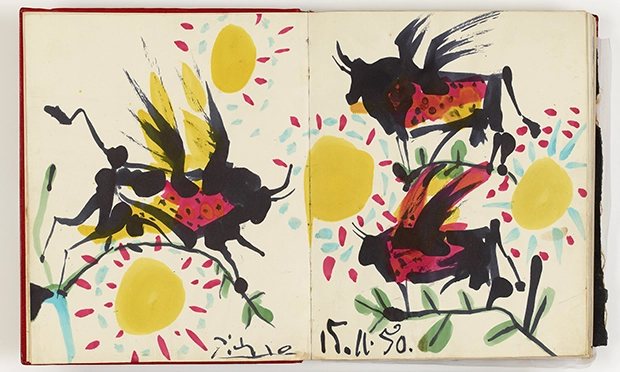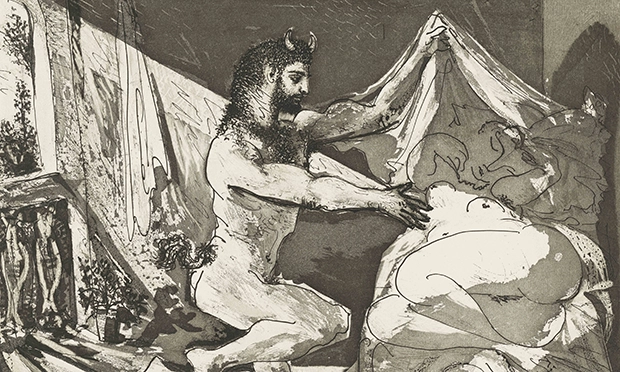Picasso: printmaker, British Museum, exhibition review: ‘Worth the effort’

Leaping bulls, 1950 © Succession Picasso, DACS, London 2024
An exhibition of Pablo Picasso’s prints at the British Museum traces the development of the artist’s best-known figurative motifs.
Picasso loved bullfighting and wrestling, so the struggle to get into see this show may have been fitting.
After winding round riot barriers and enduring forensic examination of my cosmetics in a Soviet-style security tent, I eventually located the virtually unsigned exhibition at the top of a flights of stairs.
On presenting my ticket with the time clearly indicated, a security guard told me “everything is closed here”.
I nevertheless persevered (the exhibition was in fact open for another full hour), and the collection of around 100 etchings, engravings, aquatints, drypoints, lithographs and linocuts was worth the effort.

Faun uncovering a woman, 1936 © Succession Picasso, DACS, London 2024
The prints on display date from 1904 to 1971, and they include a selection of the 347 that Picasso made in 1968 at the age of 86.
We see work from the artist’s myth-inspired Vollard Suite as well as images incorporating his fascination with circuses, brothels and animals.
Most interesting of all, perhaps, are those prints that show how his well-known visual imagery developed: studies based on the work of Rembrandt, Cranach the Elder and others, as well as bullfight etchings that prefigure what is perhaps his most famous canvas of all: Guernica.
Picasso’s command of the craft of printmaking is evident throughout, as is his versatility.
A number of the prints have an off-the-cuff look to them, though others embody meticulous attention to detail. They can be read as the backstory to the artistic superstar’s more famous paintings, but many are also masterpieces in their own right.
Picasso: printmaker runs until 30 March 2025 at the British Museum, Great Russell Street, WC1B 3DG.
